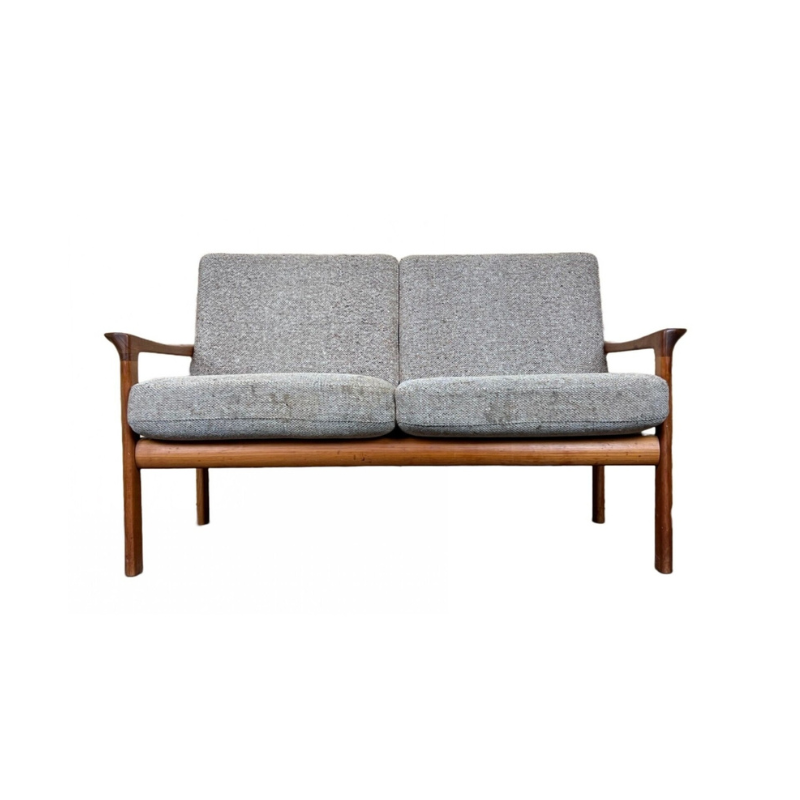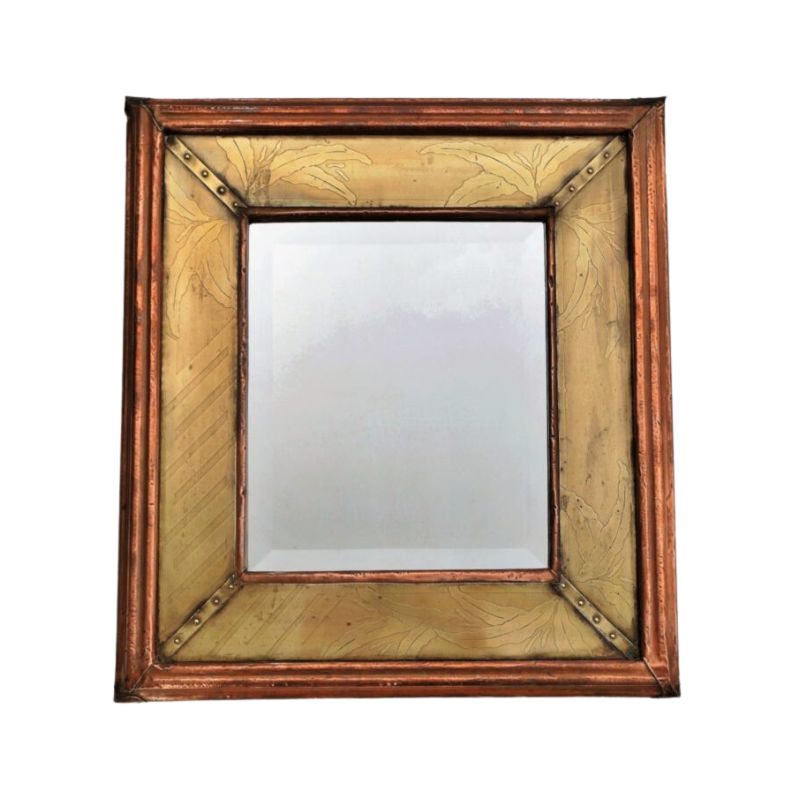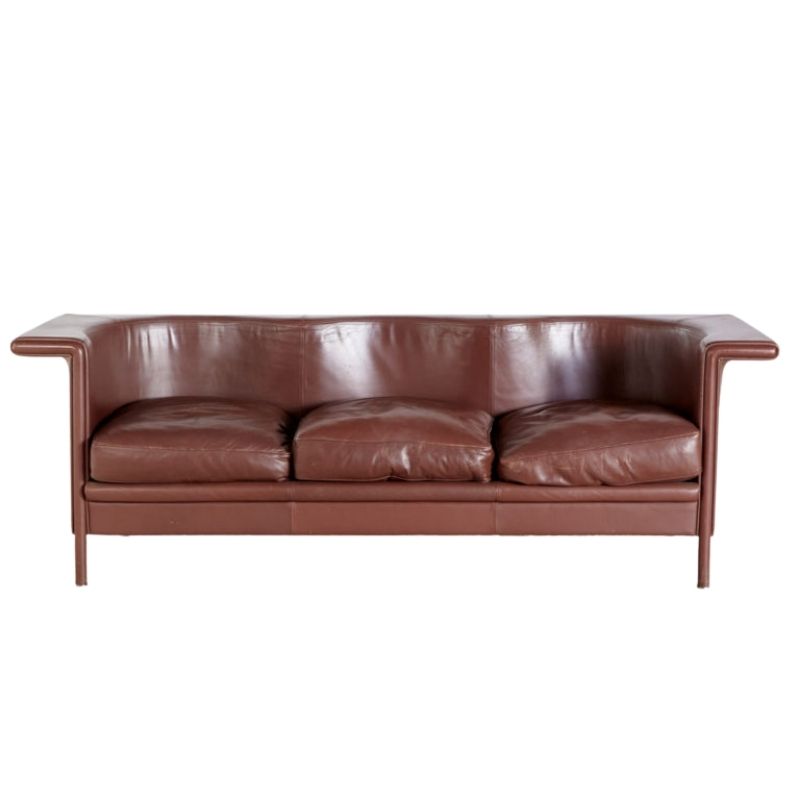Thought I'd revive this old...
Thought I'd revive this old thread to renew discussion on splits/cracks in staved teak. I recently acquired two Dansk pieces that have partial splits. One is actually a crack within a staved piece, the other is a split seam between two staves.
Both cracks/splits are very narrow (.25 - .5mm?) and visually do not detract significantly from the pieces (one old Congo bucket and one Rare Woods mutenye tray). My first inclination is to fix them, and at the very least, prevent the cracks from getting larger.
I have had successful previous experiences regluing splits in teak chairs using Gorilla Glue inserted into the crack via a glue syringe, then clamping. The acetone/wood glue approach is not really an option as I cannot properly access the surfaces inside the crack/split to clean. The curves of the pieces makes clamping a little more challenging, and I also have some concern that overclamping might weaken/split another part of the piece.
I have even entertained the possibility of infilling the crack with putty and painting to match the existing patina. I normally do not go the putty route, but since the gap is so narrow in these cases. . .
Any thoughts on the matter? Attempt to fix or leave alone? I was planning on oiling the pieces once or twice a year. I live in Chicago, which has decent temperature and humidity swings throughout the year, but no forced air in the house.
If the piece is structurally sound,
you might consider leaving it as is.
As we all know, wood moves as it absorbs and desorbs moisture. Unfortunately, as the material ages, it also loses elasticity and is less able to return to its full dimensions during periods of higher relative humidity. Though teak is considered relatively stable once it has reached equilibrium with the environment, it is not immune from this effect. Compounding the problem is the shape of your particular piece, its staved construction, and teak's notorious tendency to resist glue. Worse, using the bucket for its intended purpose - imagine liquid water in the form of condensation between the plastic liner and the inner wall - could even exacerbate the problem.
If it were mine, I'd continue to use it carefully and keep an eye on the glue-joint failure. There really is no such thing as a "permanent" fix, but a good repair is finicky to execute well and it, or other original joints, may well fail sometime down the line anyway. The open gap may even help delay future splits as it effectively provides relief for tension the vessel may come under as it inevitably shrinks.
Dry clamp test
While there are many valid reasons to leave it alone, if you can fix the crack right then I think it would be worth fixing. In the case of the bucket I would test the feasibility of fixing it right by dry clamping the piece to see if the crack disappears. I'd try clamping it with a piece of cord or rope tied around the narrower top or bottom and then pushed bit by bit toward the thicker middle, exactly how they used to hold staved barrels together. You could also add wedges all the way around.
If you can't get the crack to disappear with clamping then you will not get a good glue joint, and I'd leave it alone.... The only other way to do it right would be to intentionally--and gently--break it in two so that you can get a proper tight glue joint by cleaning foreign matter out of the crack. A fresh, clean split properly clamped and glued will disappear completely. But that isn't for the faint of heart.
Thanks for the comments....
Thanks for the comments. I've already done some prelim testing to see if the cracks would close under a low amount of pressure (they don't). Increased pressure feels like it might cause trouble elsewhere, especially for the thinner curved staves of the tray. I guess I'm leaning towards doing nothing.
I had a crack between two...
I had a crack between two staves on this extra large Dansk salad bowl, which was a slight separation only wide enough to slip a sheet of paper between. I used Titebond wood glue, and worked the glue down the crack using strips of paper, dental floss style. To pull the crack together, I used some wide, strong paper masking tape, which in my case was sufficient pull the crack entirely together and squeeze out the excess glue (involves stretching the tape by pulling really hard on it). Had stretching the masking tape not worked, I would have wrapped the bowl with a loop of cord, and tightened it by twisting a stick of wood around the cord, like a tourniquet. Of course, you make sure the joint will pull together before you try gluing it. Anyway, so far this glue repair has held OK. Had the wood surfaces been contaminated with salad dressing oil, etc., the repair would probably have failed.
Technical minutia.
I know, I'm annoying, but the ice buckets and tchp's bowl are the only pieces illustrated in this thread that are of staved construction. The trays, mills, boxes, and even the lid of the spectacular wenge bucket in the OP are not.
Sorry, I felt compelled. Maybe I should just have had a whisky instead. Please carry on.
My understanding of the...
My understanding of the definition of wood staved construction is strips of wood that have been glued together (for both wood stability and minimizing wastage reasons). It would not need to be limited to circular barrel staved layout.
Many, if not most, of the Dansk teak designs (trays, cutting boards, and bowls) use this strip construction, even the tray shown above.
I have always defined "staved...
I have always defined "staved" in the same way as tktoo, but it does look like there are some variations by country or region. The type of glued strip plank construction seen below is commonly referred to as "stave core". Here in the USA, it seems more typical to refer to the gluing together of strips of wood (in order to make a larger piece) as "lamination", rather than "staving".
Dansk ought to know.
Obviously, any confusion rests within me. Upon further reading, it seems that it is an accepted description of what I would call an edge-glued or laminated panel, though not commonly used here.
Sincere apologies for my USA-centric perspective. Alas, it is a common affliction among us.
tchp: Remember "lumbercore"? It was the substrate of choice for American-made Danish inspired, veneered case pieces in the '60's and '70's by contract manufacturers like Drexel, Lane, etc. It held advantages over plywood for rigidity, weight, and ability to accept fasters and glue.
If you need any help, please contact us at – info@designaddict.com









